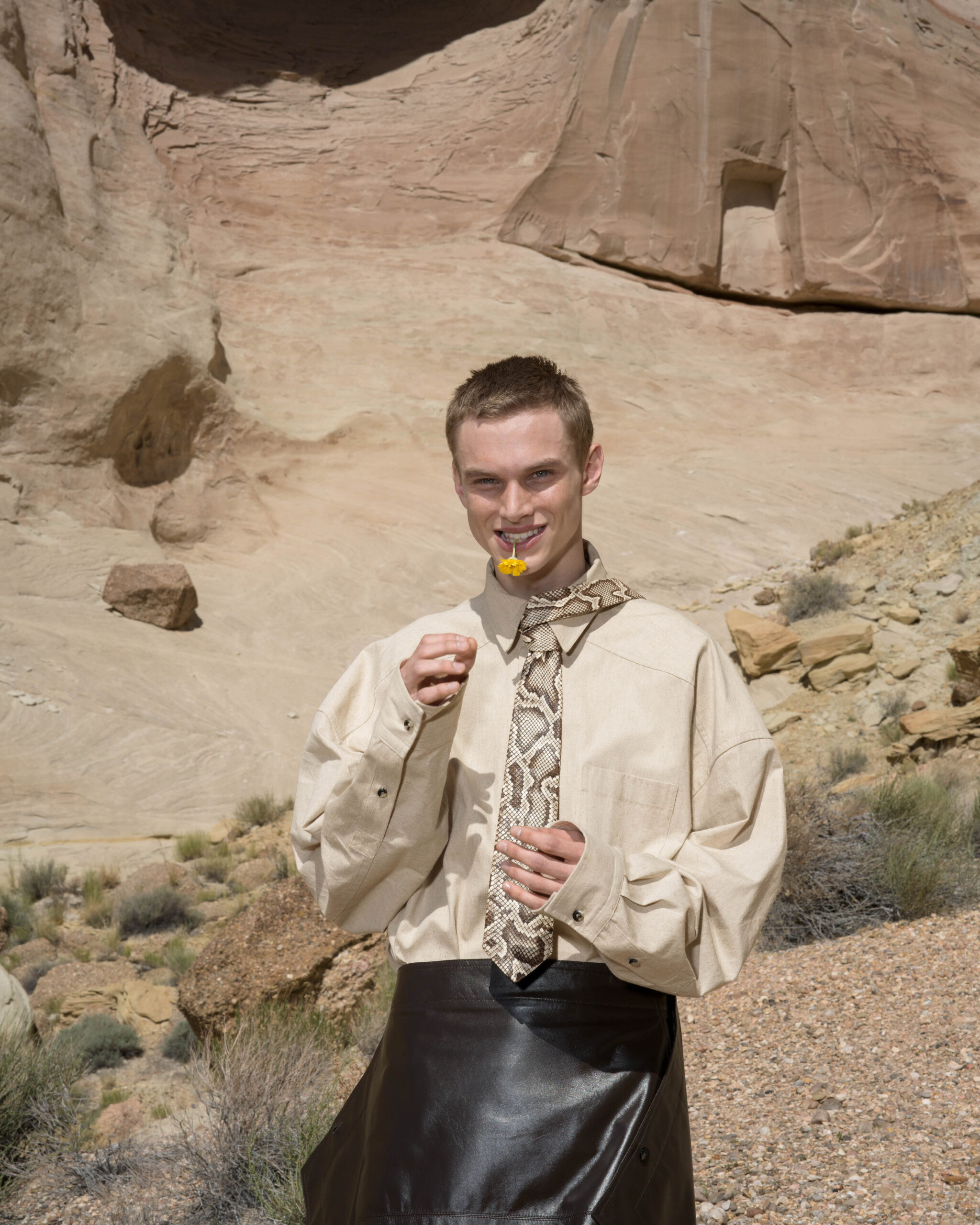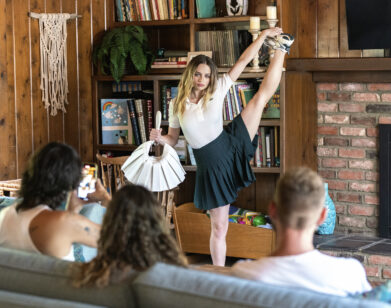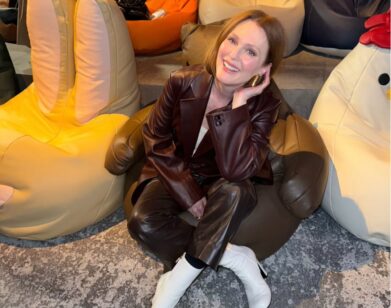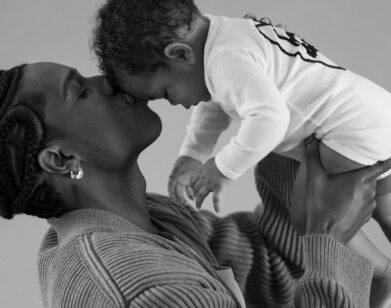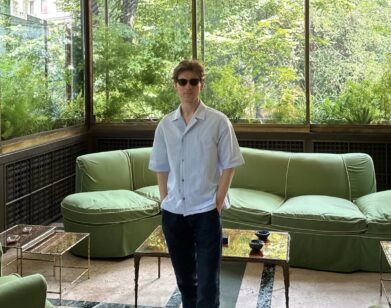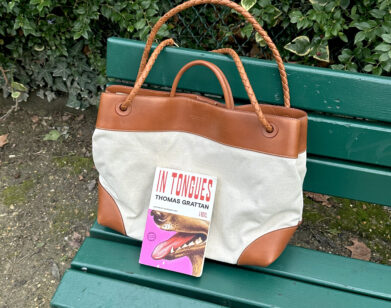CAMPAIGN
Bottega Veneta and Rahim Fortune Take Us Inside Area 51
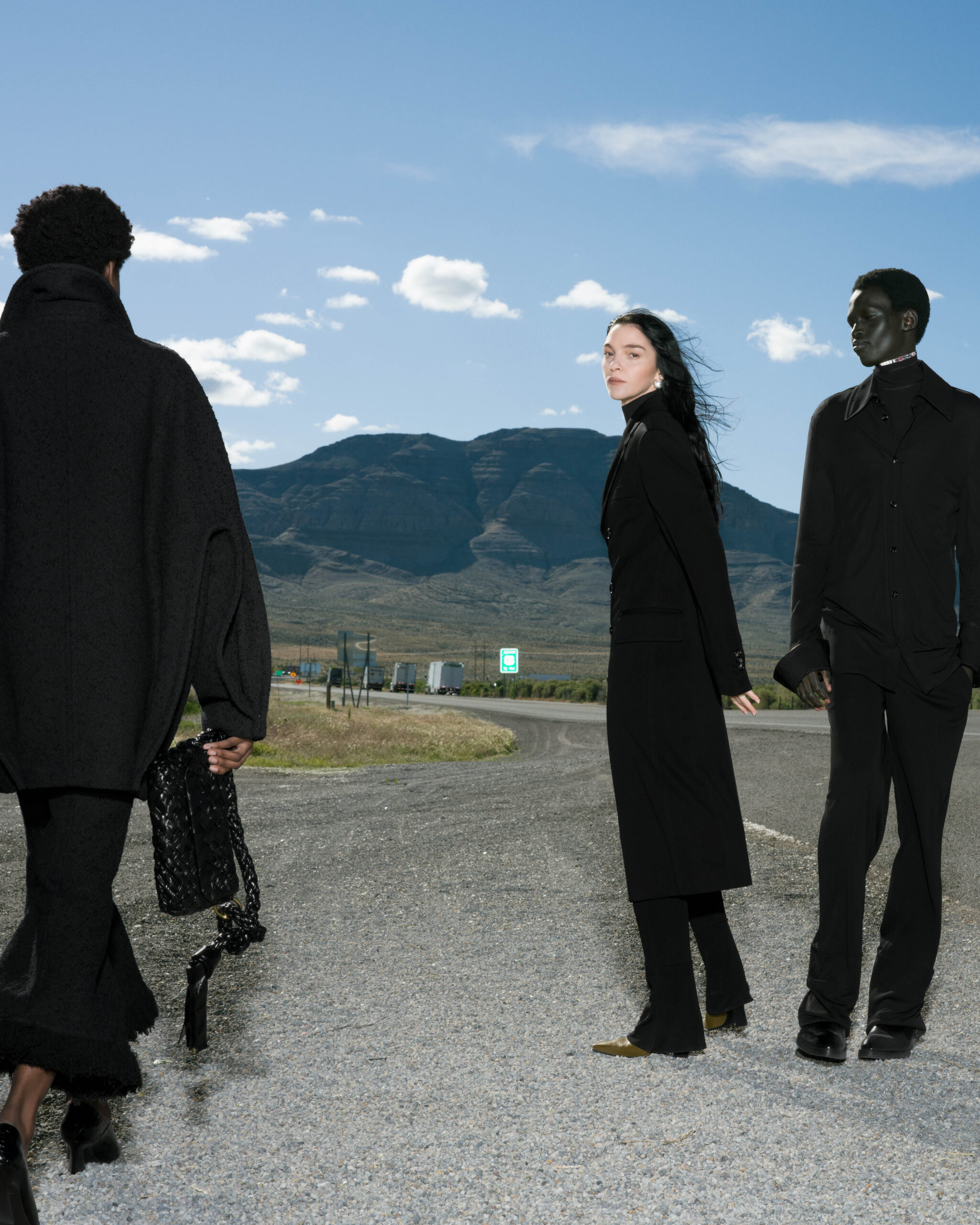
Bottega Veneta, photographed by Alec Soth.
When Bottega Veneta descended upon Area 51 to shoot their FW24 campaign video, a swarm of models landed like aliens from the planet of gorgeous faces and woven purses. Directing the accompanying campaign video was Rahim Fortune, the Brooklyn-based photographer who had been looking for an excuse to go to the Nevada desert anyway. “It’s fairly remote, so we had to stay in these very kitschy motels that are predicated on tourism for the extra terrestrial highway,” the 30-year-old said. Kitschy, of course, isn’t what comes to mind when you think Bottega. So Fortune eschewed the obvious alien signage in favor of a kind of suspenseful moodiness, as he calls it—something happening “off camera” that seems to bring an intensity to his entire oeuvre. To find out what was really going down, we called up Fortune, who maintained that while he “didn’t see any UFOs, there’s definitely some stuff going on in those mountains.”
———
EMMA STOUT: Hi, Rahim. Where are you?
RAHIM FORTUNE: I’m in Brooklyn.
STOUT: And that’s where you’re based?
FORTUNE: Yeah, I split my time between here and Texas.
STOUT: Let’s talk about your campaign. How did you come to be involved with the production?
FORTUNE: That came through Pierre [Debusschere], Image & Music Director for Bottega. He works with the same agency that I do, and he was looking for a director this season. His agent suggested my work, and he really liked some of the stuff that I had done. In particular, I had shot a pretty big editorial for Re-Edition Magazine. And so it was nice. The campaign came directly to me. It wasn’t something where I had to bid or be up against other directors. It was a pretty smooth process and kind of a dream client.
STOUT: You often deal in black and white portraiture and now, this was more of a landscape film. What was it like to work in a new medium?
FORTUNE: Yeah, I’ve directed some things in the past, some commercial things. The DP [director of production] who I worked with is actually one of my best friends, Ade Randall. We’ve been best friends for a decade, literally since we got out of high school. As far as working with fashion and incorporating landscape, the reference point was still pretty close for me. But obviously, shooting in color is something that I do mostly for editorial and commercial purposes. Hopefully, I’ll have some personal bodies of work that are done in color. But it was definitely a big step into that new direction, as you said. A lot of reference points that I pulled from were people like Dorothea Lange and this tradition of the American landscape. So it wasn’t too far from my comfort zone. And with fashion shoots, they happen pretty fast. You have to be able to be pretty reactive to the environment. It was actually a lot colder in the desert than I expected, which was also an added element.
STOUT: Did you choose the Area 51 landscape?
FORTUNE: No, that was the creative director. They had shot half of the photo campaign in Utah at a very nice kind of celebrity hotel that’s out there. And then the second part of the shoot was shot near Area 51. When I heard about it, I was excited because it’s a spot that I probably wouldn’t have gone to otherwise. It’s fairly remote, so we had to stay in these very kitschy motels that are predicated on tourism for the extra terrestrial highway. Working with the models was really cool because we’re pretty close in age. We had a kind of rapport where it was a little bit more casual and informal. So that was something that I also enjoyed. I’m pretty laid back in a way that I direct. I find that with portraiture, it’s easier to get images of people feeling comfortable if you don’t overdirect. I was able to maintain a very calm set, and I think the images that we got show that.
STOUT: So there weren’t any UFO sightings then?
FORTUNE: I didn’t see any UFOs, but there’s definitely some stuff going on in those mountains. A couple of times you would hear the sound barrier be broken. All of a sudden you get a sonic boom. And I did see a couple state-of-the-art helicopters fly into the mountains. But no UFOs that I can confirm.
STOUT: What would you wear if aliens invaded the earth?
FORTUNE: Probably those Bottega shoes, the shiny ones.
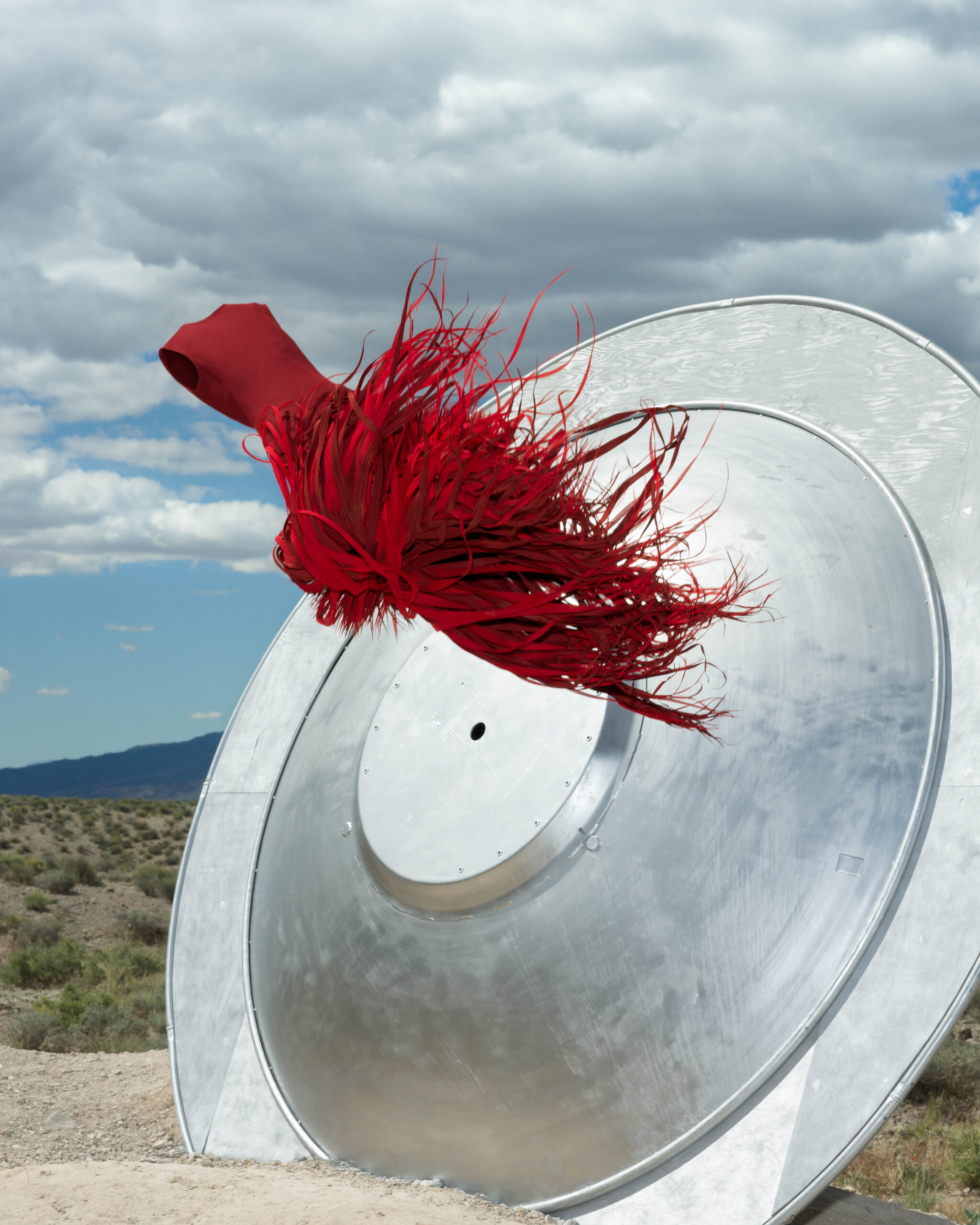
STOUT: I feel like there was something a little bit foreboding about the video. It was this romanticized prairie landscape, but there was a dark energy underneath it all. Was that the vision?
FORTUNE: Yeah, my work tends to be pretty moody and kind of serious. Sometimes commercial clients don’t always love that. They want something that feels a bit more lighthearted. It’s definitely a direction I can go, but for my own personal vision, I tend to lean into the intensity that I draw from the people that I photograph. There were also these welded alien sculptures. I wasn’t interested in showing any signs that indicated where we were– and rather, using the desert as the landscape. But then as you said, this dark tone implies that there’s something impending. The models are moving through the landscape, and my thought was to have it feel as though they may be descending on a location– either storming Area 51, or there being an abduction. Or maybe the subjects are the aliens. It’s left to interpretation. I was really interested in the idea of something happening off camera that’s felt in the film, but isn’t directly given away. The viewer never really gets to know what it is, and it’s a way of creating suspense in the short form of a one-minute video.
STOUT: How do you choose your subjects for personal projects?
FORTUNE: I’m definitely attracted to people who have a great sense of personal style or very strong physical features. A lot of it also is left to chance. Often when I go out to shoot, there’ll be an end destination, if it’s a location or an event that’s happening. But then there’s a lot of things that can happen in between, and that’s where I find a lot of interesting pictures. Whenever I see someone who I would like to take a picture of, there’s definitely an element of attraction. And it doesn’t always work out. It can be tough when you see an incredible person with a great look and you don’t nail the photo. But then also, maybe you don’t like the photo now, and a couple years later, it ages well. If you see a photograph that was taken in the ’80s, it might’ve been a mundane photo at the time when it was taken. But as time passes, certain indicators of the photograph gain a sense of memory or nostalgia. And I think that’s when they start to really find a life.
STOUT: Did you go to any powwows, now that the season’s wrapping up?
FORTUNE: The only one I made it to this year, sadly, was Queens Farm in Queens. I was in Texas, so I missed Shinnecock, and I also missed the one that happens in Foxwood in Connecticut, which are normally two of my favorites. Powwows are something I photograph pretty extensively, and I haven’t really released a lot of those photos since my very first exhibition at MoMA PS1 in 2018. But since then, I’ve switched to color film for photographing them, and I really just photograph the grand entrances. There’s a lot of ethics to photographing the powwows– distributing the images of people who travel and work so hard on their regalia, and the dances are spiritual. I try to be very respectful in taking from those places. I think it’s going to be something that I’m going to have to work on for a lifetime. But I’m excited to be able to dedicate some more time next year to getting out to the powwows.
STOUT: What are you working on now?
FORTUNE: I just had a book come out in April, so I’ve been doing a lot of press for that. This year, I was nominated for a French photography prize called Prix Elysée. It requires you to turn around a new series of work quite quickly. So I’ve shifted a lot of my attention to that project, and that’s what will be shown in November at Paris Photo. I’m taking some photos here and there loosely, but nothing has really taken a concrete form. This recent book was about eight years of work, so I’m giving myself some time and space to make photos. A little reset to try out different things. But I’ll always be shooting here and there, maybe in a few years it’ll start to take shape.

